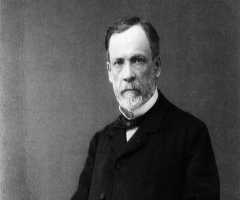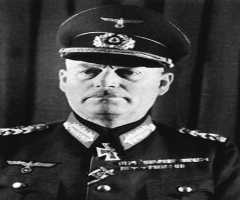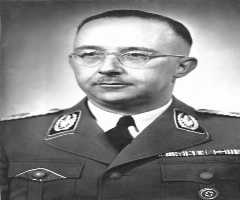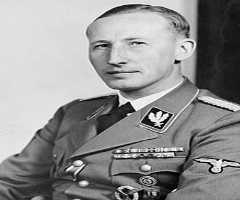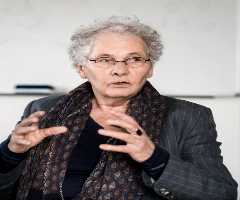Ernst Mayr Biography, Life, Interesting Facts

Birthday :
Died On :
Also Known For :
Educator, Scientist, Zoologist
Birth Place :
Zodiac Sign :
Ernst Mayr was a famous taxonomist, ornithologist, tropical explorer, historian of science and philosopher of biology. Born on July 5, 1904, Ernst Mayr became one of the leading 20th century's evolutionary biologist. Mayr’s work was a major contribution to the theoretical revolution that led to the modern evolutionary synthesis of Mendelian genetics, Darwinian evolution, and synthesis. Ernst Mayr also helped in developing the biological species concept. In his book, Systematic and the Origin of Species, elaborated on Charles Darwin’s postulation that multiple species could evolve from a single common ancestor which created the species problem. Elaborating on it, Ernst Mayr newly defined species as a group of species that can interbreed, excluding others.
Ernst Mayr stated that “when populations within a species become isolated by geography, feeding strategy, mate choice, among others, it can result in them behaving differently from other populations through genetic drift and natural selection. Thi can lead in their evolving into new species.
Early Life And Education
Ernst Mayr was born on July 5, 1904, to HelenePusinelli and Dr. Otto Mayr. His father was a district prosecuting attorney at Wurzburg, but with his interest in natural history, he occasionally took his children to field trips. This interest was picked by Ernst Mayr, and that would result in his future career path. His father died at age 13, and the family moved to Dresden, where Ernst Mayr studied at the Staatsgymnasium (Royal Gymnasium) in Dresden-Neustadt until 1918.
He continued with his high school there, where Ernst Mayr joined the Saxony Ornithologists Association in 1922. Ernst Mayr became friends with Rudolf Zimmermann, who mentored him in ornithological. After his graduation, he enrolled at the University of Greifswald in 1923 where Ernst Mayr initially studied medicine just to satisfy his family tradition. Ernst Mayr, however, changed his focus to enrol in the Faculty of Biological Science after a year.
According to Mayr, his interest in ornithology kept growing so "chose Greifswald at the Baltic for my studies for no other reason than that ... it was situated in the ornithologically most interesting area." His change in the field of study was influenced by Edwin Stresemann who he had met during his high school days. Edwin was also an ornithologist and served as an inspiration for Mayr. Ernst Mayr later studied at the University of Berlin where he received his doctorate in ornithology under Dr. Carl Zimmer on June 24, 1926, at the age of 21.
Career
After his doctorate, Ernst Mayr picked a position at the Berlin Museum with a monthly payment of 330.54 Reichsmark. In 1927, Ernst Mayr partook in an International Zoology Congress at Budapest where Ernst Mayr was introduced to banker and naturalist Walter Rothschild by Stresemann. Walter then asked Ernst Mayr to undertake an expedition to New Guinea on his behalf and that of the American Museum of Natural History in New York. Ernst Mayr embarked on the expedition where he collected thousands of bird skins. This would lead to him naming 26 new bird species and 38 new orchid species. While there, Ernst Mayr accompanied the White South Seas Expedition to the Solomon Islands. Mayr left New Guinea for Germany in 1930.
Ernst Mayr accepted the position of a curator at the American Museum of Natural History in 1931. While there, Ernst Mayr played an important role in getting back the Walter Rothschild collection of bird skins. The skins had been sold off in order to pay a blackmailer. In 1942, Ernst Mayr published his book, Systematics and the Origin of Species to complete the evolutionary synthesis Darwin had started. Influencing American ornithological research, Ernst Mayr also monitored the young birdwatcher through which he identified the differences between American and German birding societies. With this discovery, Ernst Mayr stated that the German society "far more scientific, far more interested in life histories and breeding bird species, as well as in reports in the literature." Under the auspices of the Linnean Society of New York, Ernst Mayr took the initiative to organize a monthly seminar for young birdwatchers.
In 1953, he joined the Harvard University, where he was appointed the director of the Museum of Comparative Zoology from 1961 to 1970. Ernst Mayr retired as an emeritus professor of zoology in 1953. His retirement paved way for his writing works. He published more than 200 papers in several journals and 25 books, 14 of which were published after age 65.
Personal Life
Ernst Mayr was married to Margarete Mayr. The couple had two daughters. Ernst Mayr died in 1990. Mayr also died on February 3, 2005. Mayr was a member Corresponding Member of the Royal Australian Ornithologists Union and an elected Foreign Member of the Royal Society,
Awards And Honours
Ernst Mayr received several awards for his works. He won the Balzan Prize, International Prize for Biology, National Medal of Science, the Lewis Thomas Prize for Writing about Science, the History OF Science Society’s Sarton Medal and the Loye and Alden Miller Research Award. Others include Leidy Award of theAcademy of Natural Sciences of Philadelphia, Darwin-Wallace Medal from the Linnean Society of London and the Eisenmann Medal of the Linnean Society of New York among several others.
Mayr's Ideas
Being a trade biologist, Ernst Mayr called as “beanbag genetics” the early mathematical approaches to evolution with reference to those J.B.S Haldane. Ernst Mayr argued that other factors like reproductive isolation must be taken into consideration. Ernst Mayr was also very critical of molecular evolutionary studies like that of Carl Woese and rejected reductionism in evolutionary biology in most of his writing. He rather embraced the study of the whole genome instead of only isolated genes.
Ernst Mayr noted that. “The idea that a few people have about the gene being the target of selection is completely impractical; a gene is never visible to natural selection, and in the genotype, it is always in the context of other genes, and the interaction with those other genes make a particular gene either more favorable or less favorable. In fact, Dobzhansky, for instance, worked quite a bit on so-called lethal chromosomes which are highly successful in one combination, and lethal in another. Therefore, people like Dawkins in England who still think the gene is the target of selection are evidently wrong”.
Writings
Ernst Mayr wrote several books including,Systematics and the Origin of Species, from the Viewpoint of a Zoologist, Animal Species and Evolution, Birds of the Southwest Pacific: A Field Guide to the Birds of the Area Between Samoa, New Caledonia, and Micronesia, Principles of Systematic Zoology, List of birds collected by Ernst Mayr, My Dutch New Guinea Expedition and The emergence of evolutionary novelties among several others.
More Biologists
More People From Bavaria
More People From Germany
-
![Jackson Browne]()
Jackson Browne
-
![Felix Mendelssohn]()
Felix Mendelssohn
-
![Richard Georg Strauss]()
Richard Georg Strauss
-
![Reinhard Heydrich]()
Reinhard Heydrich
-
![Paul Breitner]()
Paul Breitner
-
![Christiane Nüsslein-Volhard]()
Christiane Nüsslein-Volhard

